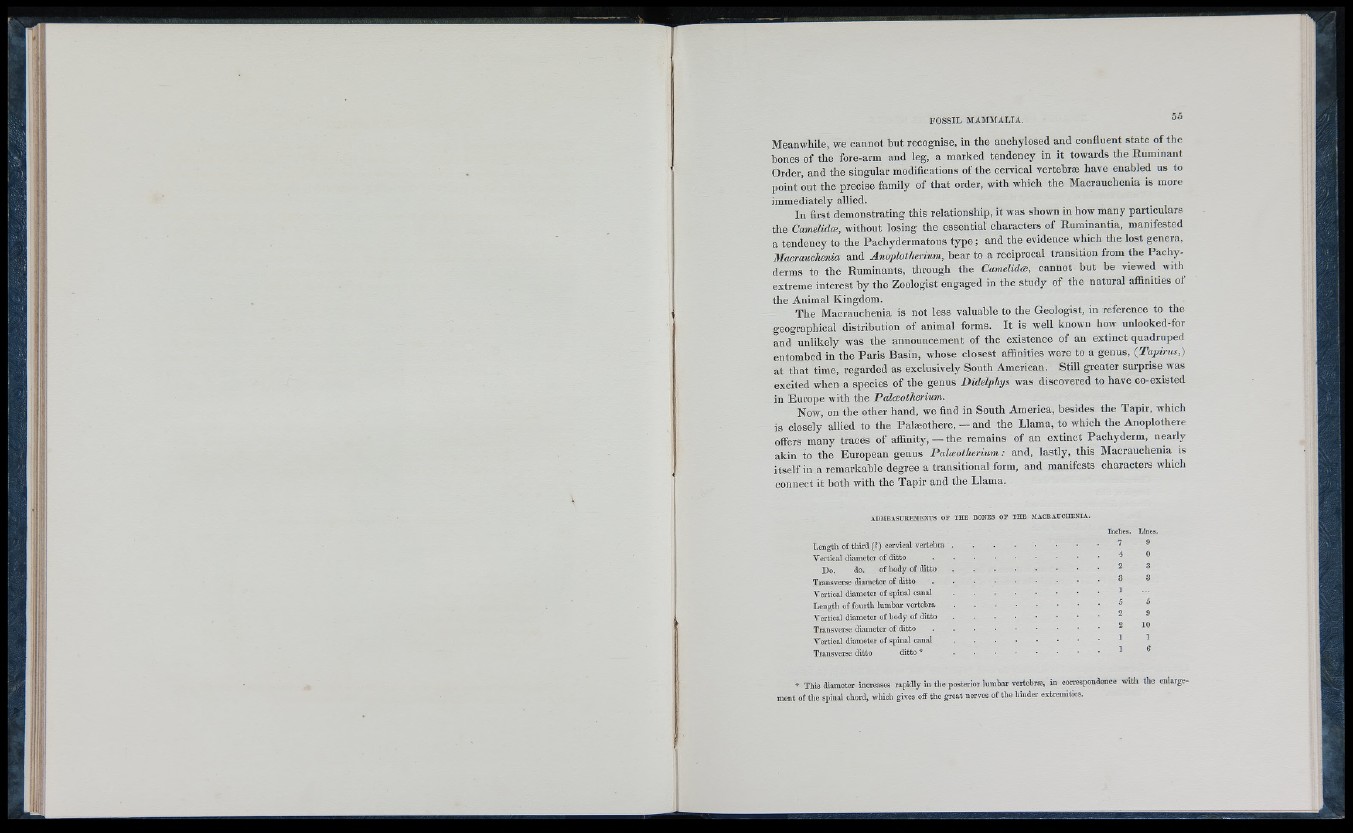
Meanwhile, we cannot but recognise, in the anchylosed and confluent sta te o f the
bones o f the fore-arm and leg, a marked tendency in it towards the Ruminant
Order, and the singular modifications o f the cervical vertebræ have enabled us to
point out the precise family o f that order, with which the Macrauchenia is more
immediately allied.
In first demonstrating this relationship, it was shown in how many particulars
the Camelidæ, without losing the essential characters o f Ruminantia, manifested
a tendency to the Pachydermatous type ; and the evidence which the lost genera,
Macrauchenia and Anoplotherium, bear to a reciprocal transition from the P a ch y derms
to the Ruminants, through the Camelidæ, cannot hut be viewed with
extreme interest by the Zoologist engaged in the study o f the natural affinities oi
the Animal Kingdom.
Th e Macrauchenia is not le ss valuable to the Geologist, in reference to the
geographical distribution o f animal forms. I t is well known how unlooked-for
and u nlikely was the announcement o f the existenc e o f an ex tinc t quadruped
entombed in the Par is Ba sin, whose c lo se st affinities were to a genus, {Ta p iru s,)
at that time, regarded as exc lusively South American. Still greater surprise was
excited when a spe cie s o f the genus Didelphy s was discovered to have co-existed
in Europe with the Paloeotherium.
Now, on the other hand, we find in South America, besides the Tapir, which
is closely allied to the Palæothere, — and the Llama, to which the Anoplothere
offers many traces o f affinity, — the remains o f an ex tinc t Pachyderm, nearly
akin to the European genus Palæotherium : and, la stly , this Macrauchenia is
it s e lf in a remarkable degree a transitional form, and manifests characters which
connect it both with the Tapir and the Llama.
ADMEASUREMENTS OF THE BONES OP THE MACRAUCHENIA.
Inches. Lines.
L en g th of th ird (? ) cervical v e r t e b r a ..................................................................................7 9
Vertical diameter of d i t t o .................................................................................*
Do. do. of body of d i t t o ....................................................................... ^ ^
Transverse diameter of d i t t o ................................................................................. ^ ^
V e rtic a l d iameter o f spinal canal . . • • • • • • ^
Length of fourth lumbar v e r t e b r a ................................................................................. ^ ^
Vertical diameter of body of d i t t o ....................................................................... ^ ^
Transverse d iameter of d itto . . . • • • • • • ^
Vertical diameter of spinal c a n a l .......................................................................^ ^
Transverse ditto ditto * ^ ®
* This diameter increases rapidly in tlie posterior lumbar vertebræ, in correspondence with the
ment of the spinal chord, which gives off the great nerves of the hinder extremities.